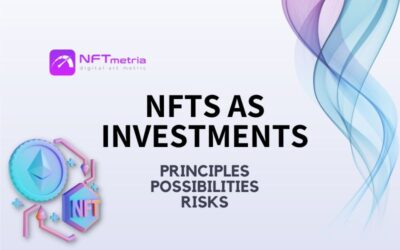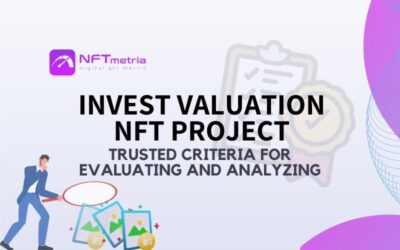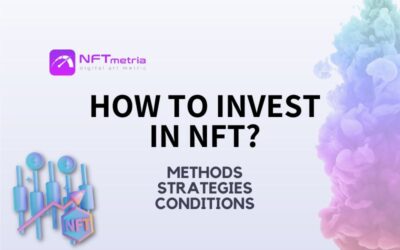Non-Fungible Tokens (NFTs) have taken the world by storm, emerging as a new and exciting form of digital asset. The year 2021 witnessed a meteoric rise in NFT popularity. Iconic artworks, memorable tweets, and even moments from NBA games were tokenized and sold for millions of dollars. This surge in interest was propelled by celebrities, artists, and high-profile investors, catapulting NFTs into mainstream consciousness. Amid this frenzy, NFTs started to be perceived not just as digital novelties but as potential investments.
This article delves into the evolving landscape of NFT investments, analyzing their performance and inherent risks.
Why are NFTs viewed as investments?
In addition to technical innovation, cultural and historical significance, NFTs contain other factors that make these digital assets increasingly attractive from an investment point of view.
- Increasing value over time. Once upon a time (2014) Bitcoin cost $600, and then the market saw a peak of over $50,000; now the price varies between $26,000-30,000. The NFT market in this regard follows the path of the cryptocurrency market: early adopters will be rewarded equivalently. And given that the best auction houses such as Christie’s and Sotheby’s actively support NFTs, the value of digital art will accordingly only increase over time.
- Rare and limited-edition NFTs often appreciate in value due to their scarcity. NFT collections like CryptoPunks and Bored Ape Yacht Club have created limited series, fostering a sense of exclusivity. Rarity traits and community demand drive their market values.
- Cultural and Celebrity Endorsements. NFTs associated with cultural phenomena or endorsed by celebrities tend to surge in value. Jack Dorsey’s first tweet, tokenized as an NFT, was sold for $2.9 million. Such high-profile endorsements significantly impact an NFT’s perceived worth. But in this case, it is important to be able to distinguish between projects simply promoted by NFTs by a celebrity from projects in which a famous person actually takes part in one way or another. In the first case, you risk investing in a project that, after the end of the PR campaign and the collection of millions in revenue, will stop its active development.
- Utility and Interoperability. NFTs with utility beyond mere ownership, like in virtual worlds (for example, Decentraland and The SandBox) or gaming, often have enduring value. Gamers purchase NFTs representing in-game assets, ensuring a constant market demand and value.
Risk Factors in NFT Investments
Despite their potential, NFT investments come with several risks:
- Market Volatility
NFT prices can be highly volatile. Economic factors, changing trends, and sudden market shifts can lead to rapid value fluctuations, challenging investors’ risk tolerance.
You can look at historical sales data for almost any collection and see that even the most confident and promising projects have price jumps with a difference of up to 200%. That is, this is both an opportunity for high earnings and high risks. The ability to correctly assess the investment attractiveness of an NFT project based on historical data is one of the important parameters when researching the market for an investment NFT project.
- Regulatory Uncertainty
The regulatory landscape surrounding NFTs is evolving. Legal changes or regulatory decisions can significantly impact the market, leading to uncertainties for investors. And there are already cases of litigation with the participation of regulatory authorities on the market.
For example, recently, the SEC filed charges against the creators of the Stoner Cats NFT project, alleging the sale of unregistered securities. A little earlier, the SEC brought charges against Impact Theory, which, according to the SEC, sold NFTs as unregistered securities. As a result, companies are required to pay millions of dollars after such processes. For now, such cases are precedent-setting, but with the growth of the market and liquidity on it, it will increasingly attract the attention of regulatory authorities.
- Technological Vulnerabilities
While blockchain technology ensures security, vulnerabilities in smart contracts or platform hacks pose risks. Incidents of stolen or compromised NFTs raise concerns about asset safety. For example, recently Inferno Drainer stole 13 top NFTs from Blur marketplace. Infinity Checks NFT collection was hacked, as a result of which about 40 ETH were stolen. For the market, the amount is tiny, but from the point of view of problems and vulnerability, it is a significant case.
- Ephemeral Trends
NFT values can be influenced by ephemeral trends. What’s popular today might not hold the same value tomorrow. Investors need to discern between temporary fads and sustainable market trends.
For example, the price of tokens for the scandalous Milady Maker NFT collection soared after Elon Musk posted a tweet with this image on his page. Then the market went crazy, sales jumped hundreds of times, and floor prices tens of times. But this hype news story, like any other, has a short-term effect, and investing on such dumps is irrational. You must be able to distinguish between false information and real development and promising steps of the team.
Principles of NFT investing
Investing in NFT assets is similar in some principles to investing in crypto assets, but we will highlight some of them separately:
- Diversification
Experts recommend diversification — investing in a variety of NFTs to spread risks. Owning a mix of established artworks, up-and-coming artists, and utility-based tokens can balance a portfolio.
Diversification is essentially a risk management strategy that allows portfolios to ride out natural market fluctuations. If you invest, for example, in 6-10 different NFT projects, then you reduce your own risks and reduce your own effect from market volatility.
- In-Depth Research
Thorough research on artists, projects, and market trends is paramount. Understanding the creator’s reputation, the rarity of the NFT, and its utility aids informed investment decisions.
Therefore, do not trust anonymous experts who guarantee you an increase in investment capital due to their personal insights and understanding of the market. This failed logic will 99% result in you losing money. Study the market and become an expert yourself.
- Long-Term Vision
Some investors advocate a long-term approach, believing in the lasting value of iconic NFTs and their potential to appreciate significantly over several years.
And this version is really applicable in the NFT market. The fact is that quick profitability is:
- Firstly, as a rule, low profitability,
- Secondly, to achieve it, you need to take into account a huge number of factors that are often not available to many.
In addition to the above, of course, there are many risks, factors and opportunities when investing in NFT assets. You can study all the information bit by bit on your own, or you can take our full NFT investor course. Our course will provide you with the key knowledge and strategies to successfully invest in unique digital assets. So, you’ll learn how to determine the value of NFTs, assess the risks, and maximize your potential returns in this dynamic area of financial investment.
The Future of NFT Investments
The NFT landscape is undeniably promising, blending art, technology, and investment potential. However, potential investors should approach NFTs with caution. Their volatile nature and lack of regulation make them a high-risk, high-reward asset class. As the NFT market continues to evolve, it will be essential for investors to stay informed and adapt to changing dynamics to make informed investment decisions in this burgeoning space.











